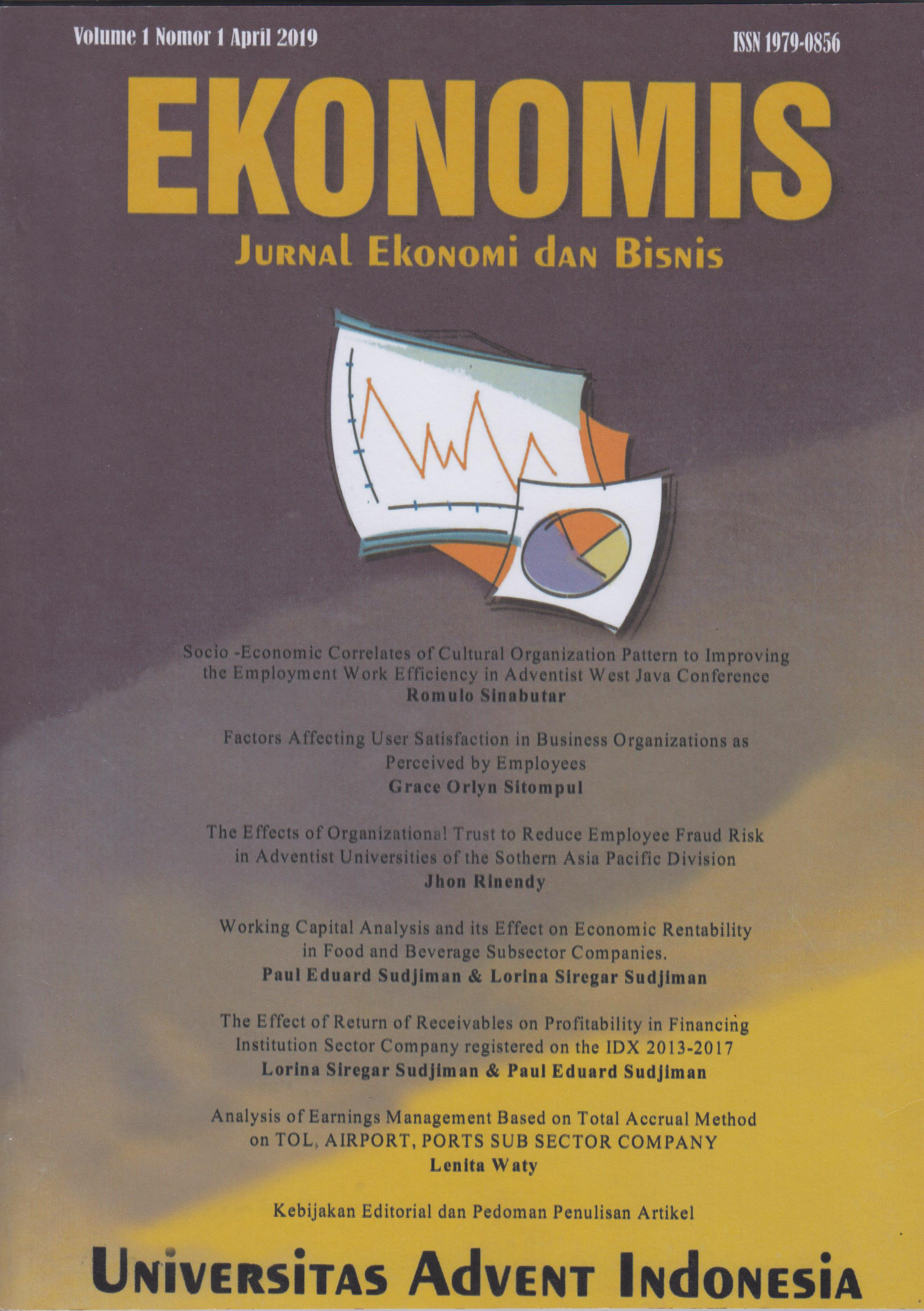WORKING CAPITAL ANALYSIS AND ITS EFFECT ON ECONOMIC RENTABILITY IN FOOD AND BEVERAGE SUBSECTOR COMPANIES
Keywords:
Working Capital, Economic Rentability, Return On Assets, Total AssetsAbstract
This study aims to determine the use of working capital in the form of current assets and current debt and its effect on profitability in the form of operating income before tax and total assets in companies listed on the Indonesia Stock Exchange. This research is a quantitative associative study and the period of this study was carried out for nine (9) years, namely 2009-2017.
The population in this study were food and beverage subsector companies listed on the Indonesia Stock Exchange in the period 2009-2017 outside of companies from banking groups and other financial institutions. The sampling technique used was purposive sampling method and obtained a sample of 10 companies with a sample (n) = 90. The data used is secondary data from financial reports on the official site of the Indonesia Stock Exchange. The data analysis technique used was simple linear regression with significance of 0.05.
Based on the results of data analysis using statistical tests conducted by the author, the correlation coefficient of Working Capital towards Economic Rentability has a very weak relationship seen from the value r = -0.163 and Significant value 0.124> 0.05 then Ho is accepted and Ha is rejected that Working Capital does not exist significant influence on economic rentability. Based on statistical analysis, it is known that the coefficient of determination shows R square = 0.027, which means that the figure shows the contribution of working capital factors to economic rentability of 2.7% while 97.3% is explained by other variables outside the research model.
References
Agus, Sartono. (2015). ManajemenKeuangan:TeoridanAplikasi. EdisiKeempat. Yogyakarta: BPFE.
Aswar Muh, Yunus Kasim dan Vitayanti Fattah., (2016). Pengaruh Modal Kerja terhadap Rentabilitas pada CV. Ifmi Motor Kotaraya. Jurnal Ilmu Manajemen Universitas Tadulako Vol. 2, No. 3, September 2016, 271-280
Bambang, Riyanto. (2001). Dasar-Dasar Pembelanjaan Perusahaan. Edisi Keempat. Cetakan Ketujuh. Penerbit BPFE, Yogyakarta
Hartawan, Edward, (2009). “Pengaruh Modal Kerja terhadap Rentabilitas pada Perusahaan Manufaktur yang Terdaftar di Bursa Efek Indonesia”.
Juli, A. (2017). Pengaruh Perputaran Kas Dan Modal Kerja Terhadap Rentabilitas Pada Perusahaan Makanan Dan Minuman Yang Terdaftar Di Bursa Efek Indonesia Periode 2014 – 2016.
Kasmir. (2017). Analisis Laporan Keuangan. Jakarta: PT. Raja Grafindo Persada.
Lestari, Wanti (2016). Hubungan Antara Perputaran Modal Kerja dengan Rentabilitas Ekonomi pada Perusahaan Manufaktur yang Go Public di Bursa Efek Indonesia (BEI). Skripsi
Munawir. (2014). Analisa Laporan Keuangan. Yogyakarta. Liberty
Sofiana, Abrar Oemar, Edi Budi Santoso. (2018). Pengaruh Perputaran Piutang, Tato, Cash Turnover dan Modal Kerja terhadap Rentabilitas Ekonomi dengan Profit Margin sebagai Variabel Intervening. Journal of Accounting.
Sutrisno. (2013). Manajemen Keuangan Teori, Konsep, dan Aplikasi. Jakarta. Ekonisia






